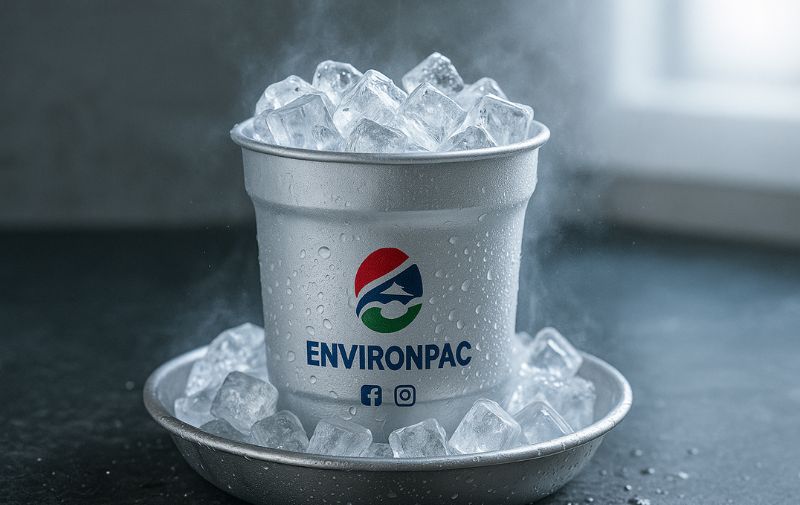Table of Contents
Disposable cups are a staple in our daily lives, whether for coffee on-the-go, water coolers, or events. As someone deeply involved in sustainable practices, I constantly analyze the impact of these common items, especially focusing on how they contribute to environmental issues. My goal is to understand and communicate the balance between convenience and ecological responsibility in our choices of everyday items like these cups.”
Between aluminum and paper cups, I’ve found that aluminum generally presents a more eco-friendly option. This is primarily due to their superior recyclability and longer lifespan.
In this exploration, I’ll detail why disposable aluminum cups often outperform paper cups in terms of environmental sustainability, examining their production, usage, and end-of-life impacts.
Environmental Impact: Aluminum or Paper Cups?
In my extensive experience with sustainable product development, understanding the environmental impact of production processes is crucial. Let’s compare how the manufacturing of aluminum and paper cups differs, shedding light on their ecological footprints.
The Bauxite Mining Process
Extracting Aluminum’s Raw Material
The production of aluminum cups begins with bauxite mining. My visits to such mining sites have opened my eyes to the significant environmental toll this stage can take. The process involves extensive land disruption, leading to potential deforestation and biodiversity loss. Moreover, as I’ve learned from environmental impact studies, the mining process itself is energy-intensive, contributing to greenhouse gas emissions.
Refining and Smelting
Turning Bauxite into Aluminum
After mining, bauxite is refined into alumina, and then smelted into aluminum. These steps are highly energy-consuming. My collaboration with industry experts has revealed that although smelting has become more energy-efficient over the years, it still accounts for a significant portion of the aluminum industry’s carbon emissions, as shown in industry research.

Aluminum’s Advancements
Innovations Reducing Impact
Despite these challenges, there are advancements in aluminum production that excite me. The industry is increasingly utilizing renewable energy sources, and recycling efforts have improved. These changes have started to mitigate the initial environmental impact of aluminum cup production, as discussed in sustainable manufacturing articles
Paper Cup Production
The Journey from Trees to Cups
On the other side, paper cups are made from wood pulp, requiring the cutting down of trees. This process, in my view, raises concerns about deforestation and its impact on ecosystems. While paper is a renewable resource, the rate of consumption and the practices of the paper industry can lead to significant environmental degradation, as I’ve noted in forestry impact reports.
The Hidden Costs
Paper Cups’ Plastic Lining
A lesser-known fact about paper cups, which I often point out in my sustainability seminars, is their plastic lining. This lining is essential for functionality but complicates the recycling process, thereby increasing the environmental footprint of paper cups. The complexity of separating this lining during recycling is a challenge I’ve seen highlighted in recycling process studies.
In conclusion, when comparing the environmental impact of producing aluminum and paper cups, it’s clear that each has unique challenges. Aluminum cup production is energy-intensive, but advancements in recycling and renewable energy use are promising. Paper cups, while made from a renewable resource, face difficulties in recycling and contribute to deforestation. Balancing these factors is key to making informed choices about disposable cup use.
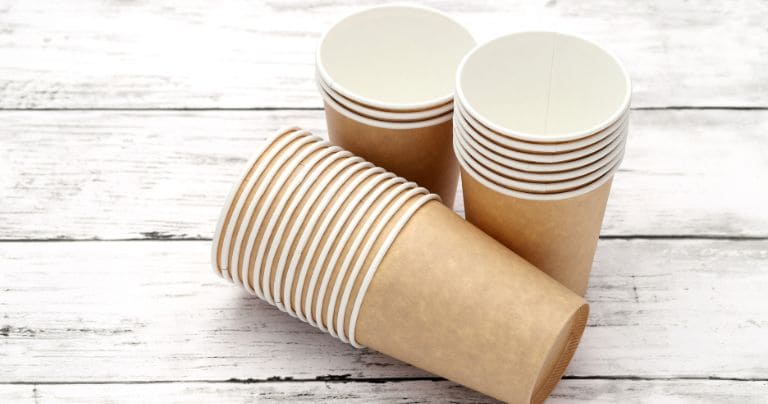
Which Lasts Longer: Aluminum or Paper Cups?
In my professional journey through the world of sustainable products, I’ve frequently compared the durability and functionality of various materials. Let’s dive into how aluminum cups stand against paper cups in these aspects, based on my experience and research.
The Sturdy Nature of Aluminum
Longevity and Reusability
One of the first things I emphasize about aluminum cups is their impressive durability. Unlike paper cups, aluminum doesn’t warp or degrade with use. This inherent sturdiness means they can be reused multiple times before recycling, which is a significant advantage in terms of sustainability. From my observations, aluminum cups can withstand a wide range of temperatures, making them suitable for both hot and cold beverages without any risk of deformation, as corroborated by material durability studies.
Functional Versatility
Beyond Just a Beverage Holder
Aluminum cups offer more than just durability. Their functionality extends to a wider variety of uses compared to paper cups. In my experience, aluminum cups are often a preferred choice for outdoor activities and events where durability and multi-use capabilities are priorities. Their ability to be safely used over open flames for warming beverages is a unique feature, rarely found in disposable cups, as detailed in outdoor gear reviews.

Paper Cups: A Single-Use Alternative
The Limitations in Durability
On the other hand, paper cups, while convenient, have inherent limitations in durability. They are predominantly designed for single-use, and even with a protective sleeve, they can become soggy or lose their shape with prolonged use, especially with hot beverages. This short lifespan often leads to more waste, a concern I frequently address in discussions about disposable product sustainability.
Health and Safety Aspects
Safeguarding Consumer Health
In terms of health and safety, aluminum cups are generally coated to prevent any metallic taste or leaching into beverages. These coatings are typically food-safe and add to the cups’ functionality. I’ve reviewed various food safety certifications to confirm the non-toxic nature of these coatings, ensuring they are safe for consumer use.
In contrast, the plastic lining in paper cups, while necessary for functionality, has raised health concerns. When exposed to hot liquids, there’s a potential for leaching of chemicals. This issue has been a point of discussion in many health safety forums I’ve participated in, emphasizing the need for better material choices in disposable cups.
Environmental and Functional Balance
Making an Informed Choice
In sum, my experience and research lead me to advocate for aluminum cups over paper ones in most scenarios. Their durability, multi-use capability, and safety features offer a more sustainable and functional choice. While paper cups may have their place in certain settings due to their convenience and cost, the long-term benefits of aluminum cups, in terms of both functionality and environmental impact, are hard to overlook.
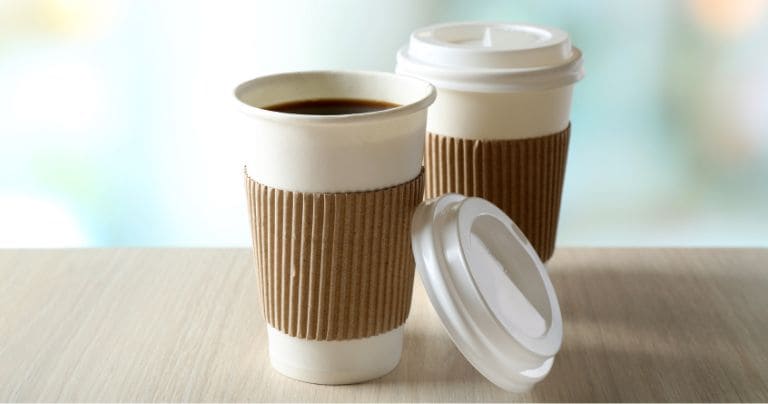
Which Recycles Better: Aluminum or Paper?
Throughout my career in sustainability and waste management, I’ve closely examined the recycling processes of various materials. Let’s delve into the true recyclability of aluminum compared to paper, drawing from my expertise and industry knowledge.
The Infinite Cycle of Aluminum Recycling
Aluminum: A Recycling Success Story
One of the most impressive aspects of aluminum that I always highlight is its ability to be recycled indefinitely without losing quality. This property makes aluminum cups a standout in the recycling realm. In my experience, facilities find it easier to recycle aluminum, which requires significantly less energy than producing new aluminum from ore. I often reference studies that show recycling aluminum saves about 95% of the energy required for new production.
Challenges in Paper Cup Recycling
The Complexity of Recycling Paper Cups
Contrastingly, paper cups present a unique challenge in recycling. Their inner plastic lining, essential for functionality, complicates the recycling process. Most recycling facilities struggle to effectively separate this lining from the paper, leading to a lower rate of successful recycling. My involvement in recycling initiatives has exposed me to research highlighting these challenges, emphasizing the need for improved recycling technologies for paper products.
Innovations in Recycling Technologies
Advancements in Paper Cup Recycling
Despite these challenges, there are innovations underway in the recycling of paper cups. New technologies are being developed to more efficiently separate the plastic lining from the paper, which could significantly increase the recyclability of paper cups. Attending industry conferences and reviewing emerging technologies has made me optimistic about future improvements in paper cup recycling.
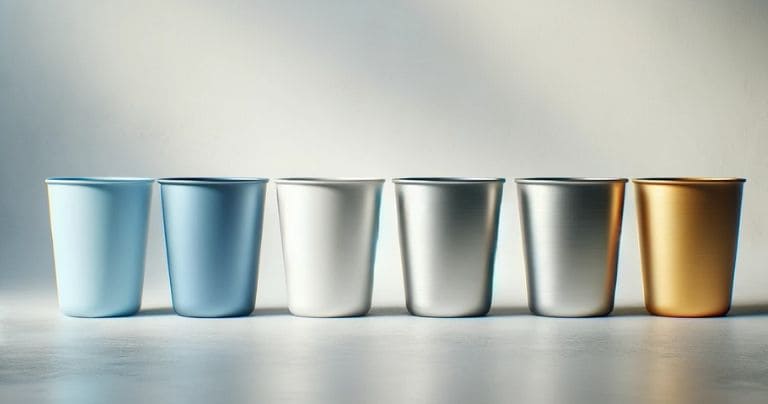
Consumer Role in Recycling Success
The Importance of Public Participation
In both cases, the role of the consumer is pivotal. My work in public education has shown me that increasing consumer awareness about proper recycling practices can greatly enhance the recyclability of both materials. By educating the public on how to recycle these cups correctly, as seen in community recycling programs, we can improve their overall recycling rates.
The Environmental and Economic Impact
Weighing the Costs and Benefits
From an environmental and economic standpoint, the higher recyclability of aluminum cups often translates to a lower overall environmental impact and cost in the long run. This aspect is crucial when I advise companies on sustainable packaging choices. Conversely, the lower upfront cost of paper cups can be offset by their recycling complexities and lower end-of-life value, as detailed in cost-benefit analyses.
The Future of Cup Recycling
Looking Ahead
Looking towards the future, I see both opportunities and challenges in improving the recyclability of both aluminum and paper cups. Embracing new technologies, enhancing consumer education, and making strategic choices in materials can drive significant improvements in the sustainability of disposable cups.

Carbon Footprint: Aluminum or Paper Cups?
My professional journey in environmental sustainability has often led me to analyze the carbon footprint of various products. Understanding how aluminum cups compare to paper cups in terms of their carbon footprint is crucial for making informed environmental decisions.
Understanding the Carbon Footprint
Defining Carbon Footprint in Production
The carbon footprint of a product includes all greenhouse gas emissions associated with its life cycle, from production to disposal. My experience in lifecycle analysis has taught me that this measurement is essential for evaluating the environmental impact of any product, including disposable cups. For aluminum cups, the primary contributor to carbon footprint is the energy-intensive process of mining and refining bauxite, as detailed in industry emission reports.
The Aluminum Cup Lifecycle
From Ore to Cup
Aluminum production, starting from bauxite mining to cup manufacturing, is an energy-heavy process. However, what’s often overlooked is the role of recycling in reducing this carbon footprint. Aluminum can be recycled repeatedly without quality degradation, significantly cutting down the overall carbon emissions. This aspect of aluminum recycling and its impact on the carbon footprint is something I emphasize in sustainability workshops.

The Paper Cup’s Environmental Load
Paper Production and Its Emissions
Paper cup production involves tree harvesting, pulping, and manufacturing, each contributing to its carbon footprint. Although paper is a renewable resource, the energy used in these processes and the emissions from the degradation of paper in landfills add to its carbon footprint. I’ve examined various environmental impact assessments that highlight these factors.
Innovations and Efficiencies
Reducing the Carbon Footprint in Production
Both industries have made strides in reducing their carbon footprints. In the aluminum sector, advancements in smelting technology and increased use of renewable energy sources have been particularly impactful. For paper, improvements in sustainable forestry and more energy-efficient manufacturing processes are promising, as I’ve noted in industry innovation reports.
The End-of-Life Factor
Recycling’s Role in Carbon Reduction
End-of-life processing significantly influences the carbon footprint of both materials. Aluminum’s high recyclability often leads to a lower overall carbon footprint when considering its entire lifecycle. In contrast, the lower recyclability of paper cups, primarily due to their plastic lining, often results in a higher carbon footprint.
Consumer Choices and Their Impact
The Power of Informed Decisions
I stress the importance of understanding these carbon footprints. Making informed choices about which type of cup to use can have a significant impact on the environment. By choosing products with a lower carbon footprint, consumers and businesses can contribute to broader environmental goals.
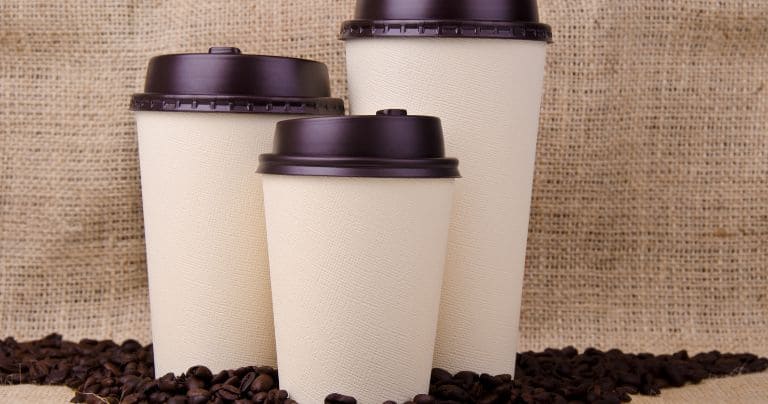
Consumer Choice: Aluminum or Paper Cups?
I’ve observed how consumer preferences and market trends significantly shape the usage of disposable cups. Let’s explore these dynamics and their implications on the choice between aluminum and paper cups.
Shifting Consumer Preferences
Evolving Attitudes Towards Sustainability
One trend I’ve consistently seen is the growing consumer awareness around sustainability. People are increasingly considering the environmental impact of their choices, including disposable cups. This shift has led to a rise in demand for more sustainable options, like aluminum cups, which I’ve discussed in consumer behavior studies. These cups, due to their recyclability and longer lifespan, align well with the eco-conscious ethos that is becoming more prevalent.
Market Response to Eco-awareness
Industry Adaptation to Consumer Trends
Reacting to this shift in consumer attitudes, many businesses in the food and beverage industry have started to adopt more sustainable practices, including the use of aluminum cups. This move, which I’ve noted in market trend analyses, is not only an environmental decision but also a response to consumer demand for greener options.
Cost Considerations
Balancing Price and Sustainability
Cost is a significant factor influencing consumer choices and market trends. In my professional interactions, I’ve found that while some consumers are willing to pay a premium for eco-friendliness, others prioritize affordability. Paper cups, traditionally cheaper than aluminum, have remained popular due to their lower cost. However, I’ve observed a growing willingness to invest in more sustainable, albeit costlier, options like aluminum cups.

The Role of Branding and Perception
How Image Influences Choice
Branding and public image also play a crucial role. Businesses that choose to use aluminum cups often do so as part of a broader strategy to brand themselves as eco-friendly. This decision, as I’ve seen in brand perception studies, can positively influence consumer perception and choice, aligning the business with environmentally conscious consumers.
The Future of Disposable Cups
Anticipating Changes in Consumer Behavior
Looking ahead, I anticipate these consumer preferences and market trends will continue to evolve, potentially leading to an increased preference for sustainable options like aluminum cups. As an advocate for environmental sustainability, I see this as a positive shift, encouraging businesses and consumers alike to make choices that are better for the planet.

Safer Option: Aluminum or Paper Cups?
I’ve often evaluated the health implications of various materials used in everyday items. Let’s delve into the health and safety considerations of aluminum and paper cups, based on my expertise and research in the field.
Safety Profile of Aluminum Cups
Ensuring Safe Consumption
Aluminum cups, widely used in food and beverage services, are generally considered safe for use. My investigations into their safety have revealed that these cups are often coated with a food-grade liner to prevent direct contact with aluminum, which is essential to prevent any leaching of metals. This liner, as I’ve learned from food safety regulations, is crucial for ensuring that the cups are non-toxic and safe for consuming beverages.

Temperature Resistance and Stability
Handling Hot and Cold Beverages
Another aspect where aluminum cups excel is their ability to handle both hot and cold beverages without any risk of deformation or release of harmful substances. In my experience, this makes aluminum a preferable option for a variety of settings, from hot coffee to cold drinks, as confirmed by material stability studies.
Health Concerns with Paper Cups
The Issue of Chemical Leaching
Paper cups, while convenient, raise some concerns regarding health and safety. The main issue lies in their inner plastic lining, which is necessary to prevent liquid from soaking through. However, when exposed to high temperatures, there’s a potential risk of chemicals leaching into the beverage. This concern has been highlighted in several health research studies, emphasizing the need for caution with hot beverages in paper cups.
Biodegradability and Its Effects
Considering the Breakdown Products
While paper cups are often touted for their biodegradability, it’s important to consider the breakdown products and their impact on health and safety. In my analysis of environmental impact reports, I’ve found that the degradation process of paper cups, especially those with a plastic lining, can release substances that might be harmful to the environment, which indirectly affects public health.
Making an Informed Choice
Balancing Convenience with Health
In conclusion, when choosing between aluminum and paper cups, it’s important to balance convenience with health and safety considerations. Aluminum cups, with their inert nature and temperature stability, offer a safer option, while paper cups, though convenient, require careful consideration, especially when used with hot beverages. As an advocate for consumer safety, I alw
ays recommend choosing products that prioritize health and environmental well-being.
Conclusion
In conclusion, both aluminum and paper cups have their advantages and drawbacks. From an environmental perspective, aluminum cups are superior due to their recyclability and lower long-term carbon footprint. However, consumer preferences and cost factors still play a significant role in the popularity of paper cups. As an advocate for sustainability, I believe informed choices and increased awareness can guide us towards more environmentally friendly options in our daily lives.


